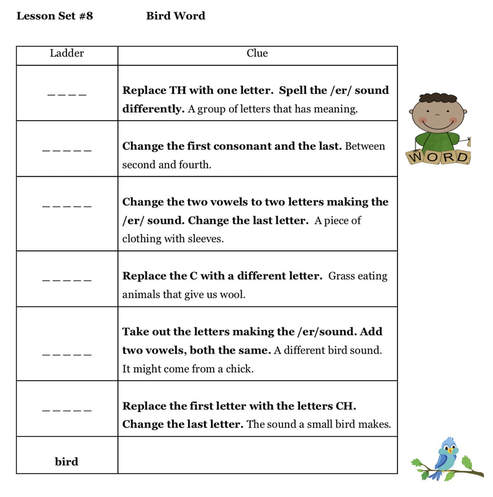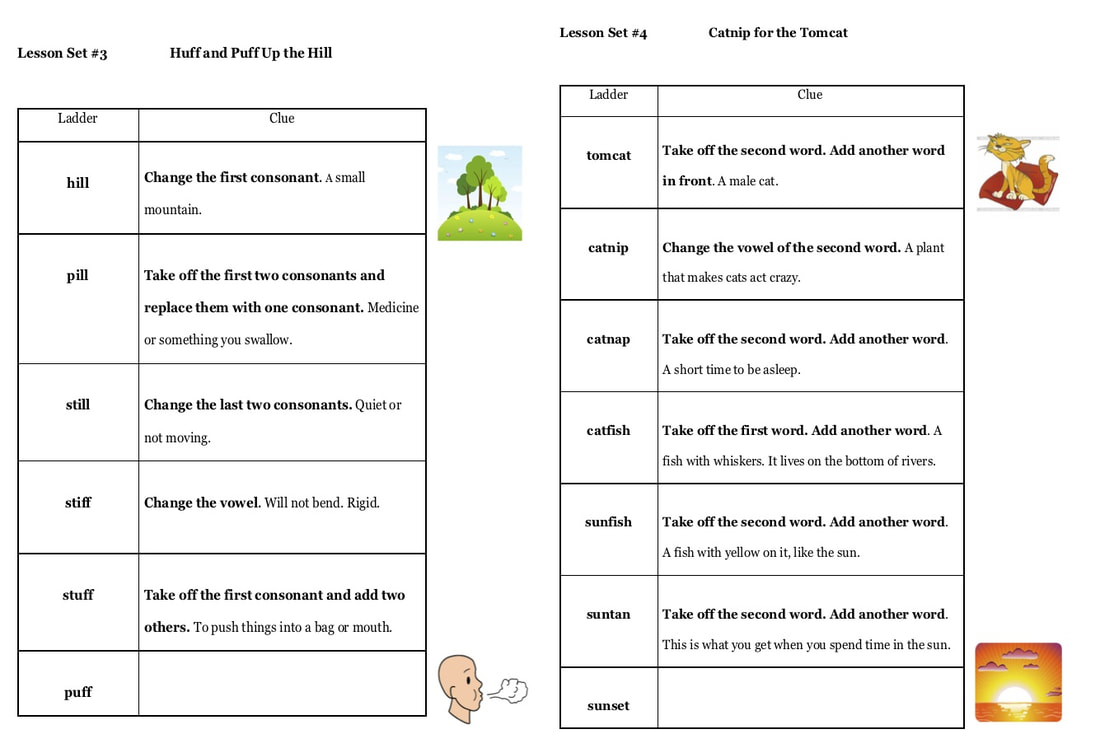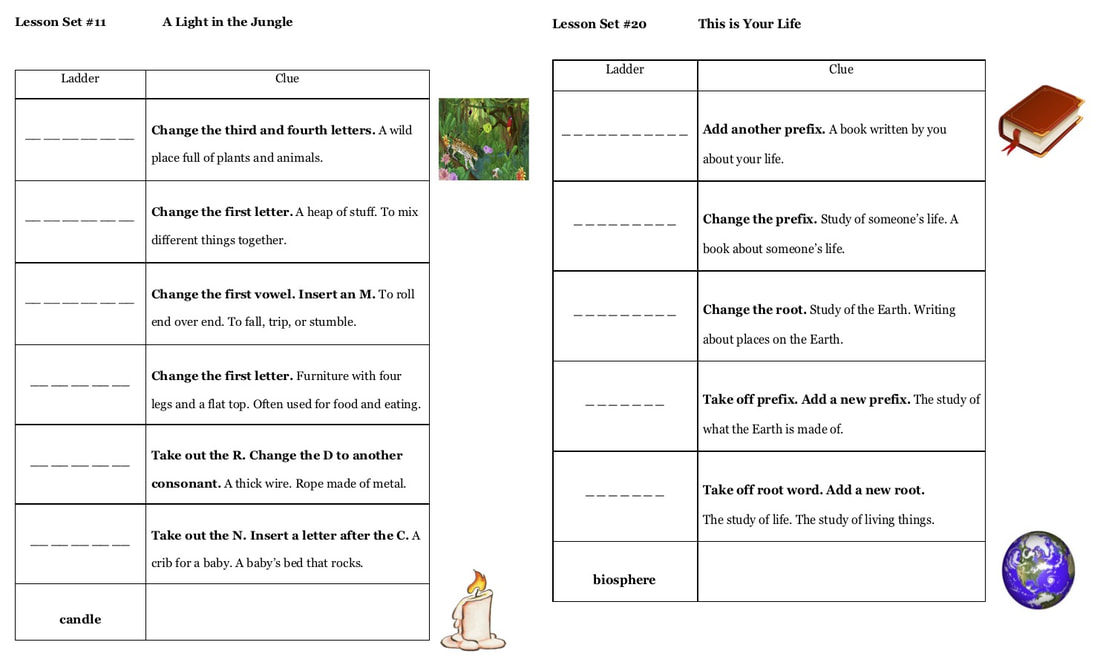|
Come late January of 2019, I’ll be celebrating the arrival of my new Stenhouse spelling book, Super Spellers Starter Sets. The “Starter Sets” of the title refers to the sets of lessons found inside. Each lesson set is chock full of best practice spelling instruction, including specific spelling features to focus on, important points of instruction, a master list of 30 to 50 spelling words, spelling strategies, differentiated words lists, and plenty of spelling activities that build reading, writing, and spelling skills. As a run up to the release of the book, I'm using this blog to offer monthly ideas and thoughts on spelling instruction pulled from the book’s lesson starter sets. I hope this information inspires the use of spelling strategies, activities, and types of instruction that strengthen student reading and writing skills, especially for students who are struggling. This first offering is all about word ladders. When you have a deep reservoir of words (a master spelling list) to draw on, you can bring many related words into any activity that teaches students how to spell, not what to spell. One effective activity is climbing a word ladder, from the bottom to the top. Word ladders involve morphing one word into another. Sometimes the word is changed one letter at a time. At other times, digraphs are subtracted or added, vowel teams are swapped in and out, and meaning-making parts are deleted or inserted. A change in one word creates a new word, and each new word is a rung on the ladder. Starting with the word at the bottom of the ladder, it may take a speller five, six, or more words to reach the target word at the top. At their most basic level, word ladders help children notice sounds, especially inner vowels, and their associated spellings. Here’s a word ladder that helps spellers notice vowels: cat, cut, cup, pup, pep, pen, pan, pin, pit, pot, hot, hog. Another word ladder that focuses on vowels is this one: check, peck, pick, chick, chip, ship, shop, chop, cheap, cheep.Notice how each new word changes one spelling feature of the previous word. At a more advanced level, word ladders help children understand patterns and meanings. This word ladder helps children notice vowel-team patterns: foil, fail, tail, toil, oil, boil, boy, bay. And this word ladder clue prompts students to think about meaning: “Take the Latin root off eject. Add a new Latin root to make a word that means to violently eject or explode like a volcano.” The new word? Erupt. As with every activity you teach, present a word ladder to the whole class, model how it is done, and then guide students as they complete a new one. Students never erase the previous word. This is because you want them to notice how the words change, letter by letter, part by part, and word by word. Through their noticing, students associate letters, letter chunks, and affixes and roots with both sound and meaning. Word ladder recording can be done with paper and pencil, a photocopy of the word ladder (such as the ones provide in my upcoming book), a dry eraser board and marker, digital tablet and stylus, and/or a word ladder template printed on oak tag, laminated, and then written upon using dry erase markers. Word ladders can be completed within a whole group, in small groups, or independently. Here are four sample word ladders. Each one comes from Super Speller Starter Sets. These first two give the answers (so you can see how word ladders work) and are appropriate for children in the 1-3 grade band. The focus of the first ladder is double consonants (ff, ss, ll) at the end of a one-syllable word. The focus of the second is compound words. The two ladders below do not give answers. They are appropriate for children in the 3-5 grade band. This first gives practice on noticing and spelling the syllable juncture for words ending in consonant-LE. The second is all about Greek roots. Once students get the routine of doing word ladders, they can do them on their own. And once you get the hang of word ladder construction, you can create your own. They don’t need to be fancy and they don’t have to have a clever beginning and ending. Another option is to challenge your students to make their own word ladders. Nothing tickles students more than when you present something they created as a challenge for the entire class.
In the end, the most important point is this: doing a word ladder helps students notice and understand how words are spelled based on sounds and letters, patterns, and meanings. Through noticing and understanding, children learn how to spell the unknown words they want to use in their writing. Even more importantly, they build the dictionary in their brains that is critical for fluent reading. Good luck with word ladders, have fun, and I wish you the best with the start of your school year! Comments are closed.
|
Mark WeaklandI am a teacher, literacy consultant, author, musician, nature lover, and life long learner.
|



 RSS Feed
RSS Feed